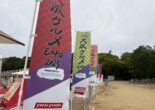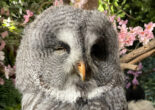
My Own Japan: An Extended Martial Pilgrimage
In 1992, the spring of my first year at university in Vancouver, Canada, while browsing collector’s comic books with my father, I flicked through a stack of Teenage Mutant Ninja Turtles back issues. I remarked to my father, “Some American comic book artists made up Japanese-themed warriors and called them ninja.” My father told me that this was no invention, and that ninja espionage agents and guerrilla fighters in feudal Japan were real. He was of that generation when the ninja boom began, in the 60s, fueled by Shinobi no Mono and James Bond films. By coincidence, a few months after that conversation with my father, I read an article in a local newspaper. An English immigrant to Vancouver had experience in the Bujinkan in Japan, and received license to train students in ninjutsu. I was intrigued, and immediately contacted the teacher to begin training.
This was a great challenge for me. Until that summer, I had never taken any interest in physical activity. I had avoided sports and physical pursuits, believing that my very poor visual acuity (I am blind in one eye, and the other is weak) precluded success at sports. In the dojo, I learned for the first time about hand-eye coordination in standard movements called kata, and in techniques called waza. My teacher handed me a katana, the typical Japanese sword, and coached me to move smoothly and slowly, practicing how to draw and cut. I learned not to duck an attack, but to move out of the way just enough to not get hit. That teacher told us we had to cultivate a spirit of immovability, symbolized by Fudo-myo, the Buddhist wisdom king.
This martial system, called Bujinkan, is headed by Masaaki Hatsumi sensei. Hatsumi sensei’s teacher, Takamatsu Toshitsugu, claimed that he was the holder of nine traditional Japanese martial arts, and passed them on to Hatsumi sensei, currently the 34th grandmaster. The origins and histories of the lineages are murky, but the schools of martial systems the Bujinkan has inherited are described in great detail in Hatsumi sensei’s books, and mentioned in the Bugei Ryuha Daijiten, the compendium of traditional Japanese martial arts. These schools have been taught in Japan, under Hatsumi-sensei’s direction, for nearly 50 years.
I had just begun my odyssey in Bujinkan, had not encountered any other Japanese systems, and had no points of reference about the traditions and expectations of martial arts students and teachers. My teacher in Vancouver told us that it was not possible for rookie members to train in Japan, and I applied myself to learning all I could of the language, culture and the Bujinkan. He dissuaded us from training with other teachers, and claimed that he was the sole authority on the training. At that time, there were very few Bujinkan teachers in Canada, so we had to take his word for it.
I continued to train while in university, and eventually I realized another passion, teaching English. The first teaching positions I encountered were at local community organizations, at full-time day schools for visiting students, and immigrant services. I applied myself to obtaining a teaching diploma in TESOL, Teaching English to Speakers of Other Languages, while I was teaching, working, and training as much as I could. Eventually, I realized that the Bujinkan teacher was not being honest with us. In fact, the training fees he collected, and the ranks he conferred on us, were not authorized by the Bujinkan. We also found out that he was not as embedded in the organization as he claimed.
I left that teacher, and found others who were, like me, passionate about this martial art, and we trained together. We later found contacts with the Bujinkan located in Japan and around the world, and we found at that indeed, we could train with local teachers in Japan. I was about to start a musha shugyo, a warrior pilgrimage. The first step, I was convinced, was to learn the language and culture before I would step foot in the Bujinkan dojos. Teaching English would become the vehicle for me to obtain a visa for work in Japan.
In 1999, I found an opportunity to make that first step, a successful application to the Japan Exchange and Teaching Program. This program places young people from around the world in elementary, junior and senior high schools all over Japan, but mostly in rural areas.
That first year I was placed in a tiny town in Ehime Prefecture. I explained in broken Japanese to everyone I encountered that I wanted to learn about budo. To my surprise, I encountered a wonderful group of Aikido practitioners who oriented me to martial arts life, and the Japanese language. While I did my best in the Aikido dojo and learned the Japanese language through movement, self study, and the guidance and patience of the senior students a few times a week, I still longed to pursue the Bujinkan martial arts.
At the end of that first year, with a wobbly command of Japanese language, I made a brief visit to Noda City where the main dojo, Bujinden, of Bujinkan is located. I was warmly welcomed, and was surprised to hear someone translating the senior teacher’s instruction from Japanese to English. I had assumed all this time that I would have to become fluent before I committed to training at Bujinden. Some senior members that I could train, and they recommended teachers who were willing to take on junior members. However, I had no legal foothold in Japan, and had to return home. The musha shugyo, the martial pilgrimage, would require a little more preparation.

Practice with disarming technique
I thanked everyone, resident foreigners and local Japanese, for their time and returned to my native Vancouver, Canada, to teach English. I was lucky that, after some months, I was able to reconnect with some local Bujinkan members under the banner of an American-led Bujinkan dojo. I had made the journey back, and now had people I looked up to who could teach me. We worked on foundational movement, and I had a deeper insight into the terms we used in the dojo because I now understood a lot more Japanese language terms we use in the training. But I felt that I was still only scratching the surface. The pilgrimage wasn’t over. I decided to jump right in to the world of Bujinkan. At that point, I thought I would do my best for one year, attempt to achieve shodan, the first black belt level, and pick up my life, career and training in Vancouver.
In 2003, I returned to Japan as an English teacher and found work and accommodation close enough to train with Bujinkan practitioners. Senior teachers worked me through the foundational kata, and the waza described in the texts called densho. I realized how little I knew about this martial art, and that the journey would could be a lot longer than a year.
In the first few years training here in Japan, I was struggled, still learning the Japanese language, and adjusting to work in a very different environment, while trying to train as much as I could. My poor vision meant that I could not understand what my teachers were demonstrating. I relied on senior members who I jokingly referred to as modoken, guide dogs, to show me again and again the shape of the forms and techniques. I took a position behind them, and copied their movement. These patient, good humored people demonstrated over and over until I could grasp the forms. I trained up to ten hours a week despite long commutes, heavy workload, and little sleep. The effort meant that I began slowly to progress, and I received shodan. My teachers encouraged ne to continue. I settled into neighborhood life, made friends in and out of the dojo, and graduated from one rank to the next.
Over the last 15 years, I have gradually come to trust my own perception of our teachers’ movement. I experienced a breakthrough in which my physical and perceptual differences no longer mattered. Hatsumi sensei and his senior teachers tell us to trust in shingan, the eyes of the gods, to guide us in our perceptions of ourselves and others. I didn’t think I had this piercing gaze into the nature of reality.
I also didn’t think I had merited the ranks the senior teachers conferred on me. In Japanese martial arts, students receive rank before they have fully mastered a skill or level. This is called saki-zuke. Teachers give saki-zuke ranks to encourage students to stick with the learning, especially when the student feels as though there are stagnating. Sometimes I wanted to quit, but I remembered my teachers who gave ne saki-zuke ranks to live up to.

Hatsumi Masaaki sensei, grandmaster of Bujinkan, and I looking at a metal fan (photo by Zayed Curumtally)
My martial pilgrimage continued, and I did my best to improve my understanding and skill in the Bujinkan. A few years ago, Hatsumi sensei decided to give me the final saki-zuke rank, 15thdan in his Bujinkan school. I declined, but he told me I had to accept. Besides, he had a challenge for me. He said that he wanted me to help the members, especially women, of the Bujinkan. I asked him how I could do this, and he said I would find opportunities.
About four years ago, I discovered an opportunity to bring people together socially. I opened my house as a home stay for fellow students. In the last four years, the house has been a place for people from around the world to get to know each other better, and share their struggles with, and insights into, the training. Spending time with guests means I get to hear other points of view, from beginners to veterans. When we have time, we practice together at home, or go through the texts that describe the techniques. My home I share with other pilgrims on this martial path.
 I cannot describe what his martial art is for other people since each person brings their own experience and needs to it. I have crossed paths with members of military from various countries, people who have survived conflicts, and others who have used this martial art as a way to enhance their work in medicine, education, and science. I can only say what this martial journey is for me. I have learned so much about the human condition, strategy for my own career in education, and both the larger Japanese culture and the martial mindset.
I cannot describe what his martial art is for other people since each person brings their own experience and needs to it. I have crossed paths with members of military from various countries, people who have survived conflicts, and others who have used this martial art as a way to enhance their work in medicine, education, and science. I can only say what this martial journey is for me. I have learned so much about the human condition, strategy for my own career in education, and both the larger Japanese culture and the martial mindset.
Hatsumi sensei often uses some catch phrases in Japanese that represent his outlook on the world, and describe his approach to martial arts. Among them are two that stand out for me. The first is kyojitsu, or truth and falsehood. We’re encouraged to look at the world with the eyes of the gods so that we can discern the real from the phantom. Sometimes, the phantoms come from other people’s insecurities, or our own. In my case, the first few steps on the path led me to be a little more skeptical, and find good teachers. Also, I learned to work around what I thought was an insurmountable impairment.
The other phrase that stays with me is yuugen no sekai, the subtle, mysterious and elegant world. In the training we get glimpses of this in efficient, seemingly weightless and graceful movement from our teachers. This is what I strive for every time I don my training uniform and step into the yuugen no sekai on the dojo floor. The wonderful teachers of this budo show me this world, and I learn a little more every day about how to follow behind them on this pilgrimage.

Senou sensei, senior teacher of Bujinkan Budo Taijutsu, and I at his dojo



